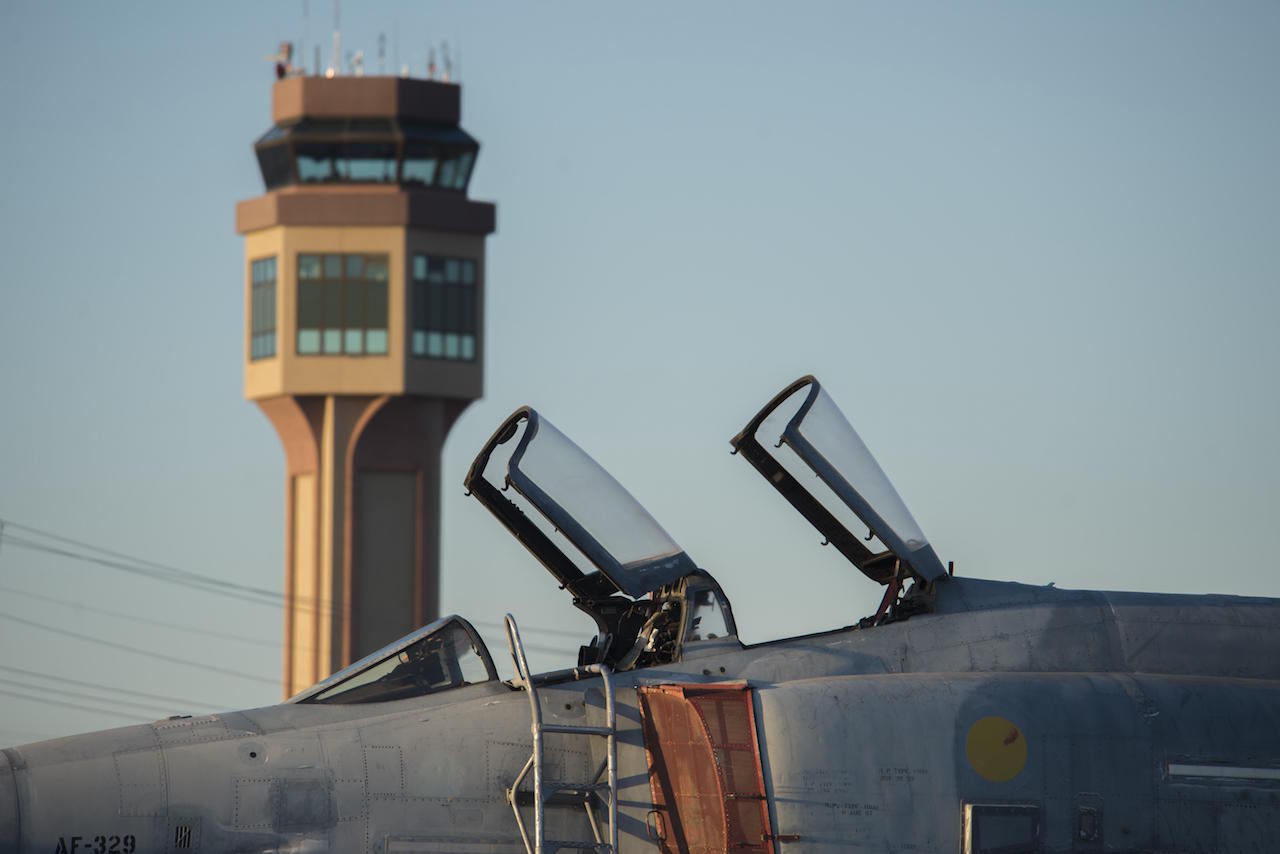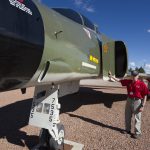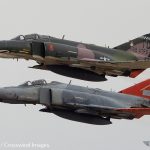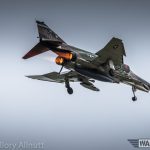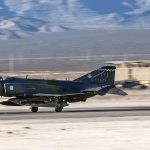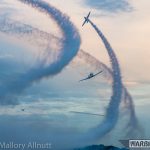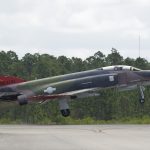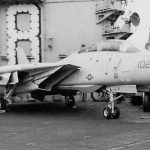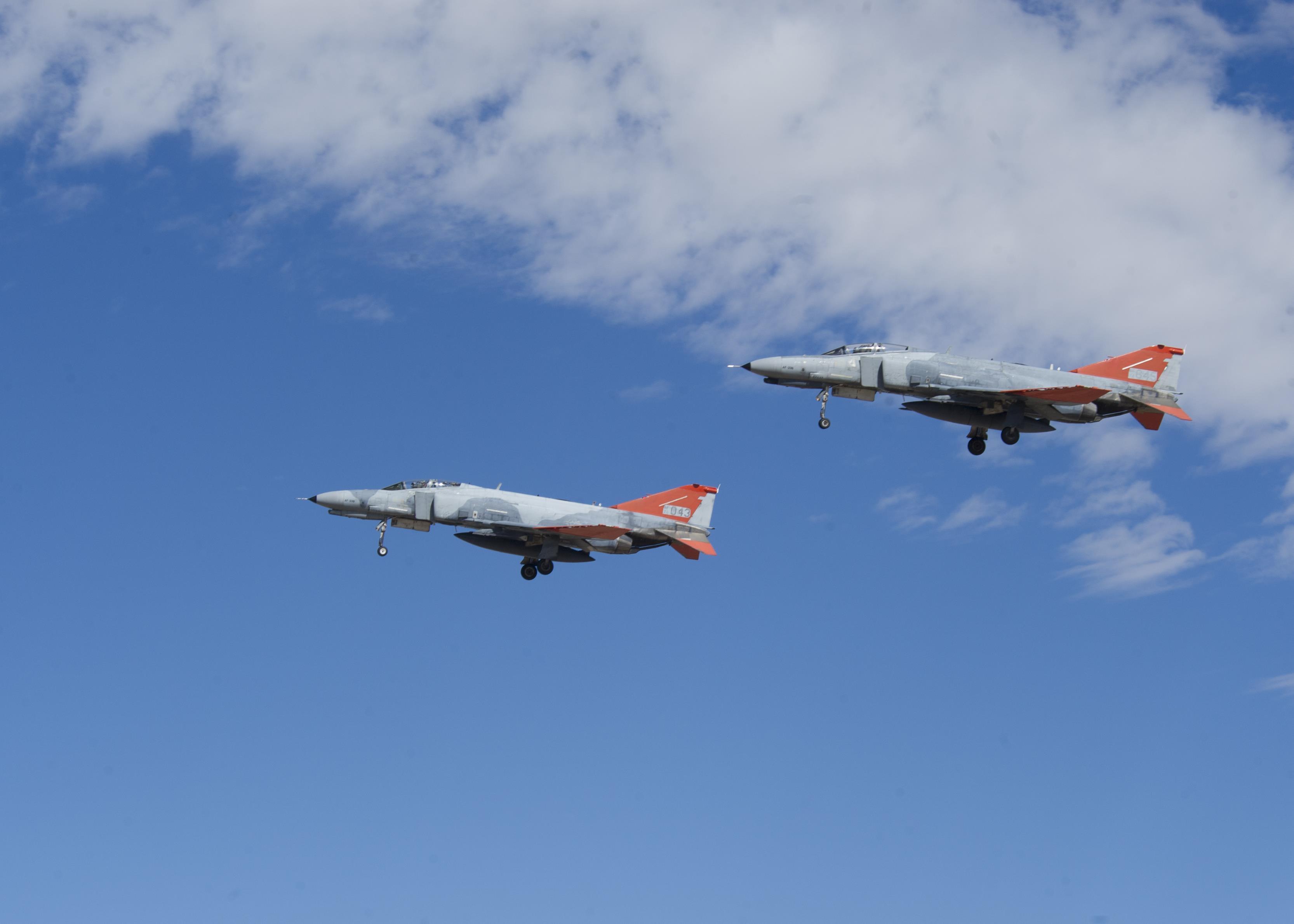
The QF-4 Phantom flew its final unmanned mission in the skies above White Sands Missile Range on August 17. During the flight, the unmanned aircraft served its primary mission as an aerial target and was shot at by an F-35 Lightning II from Edwards Air Force Base, California. “Our mission is to provide those airplanes as targets for our Department of Defense and foreign military sales customers to test the next generation of weapons,” said Lt. Col. Ronald King, the 82nd Aerial Targets Squadron, Detachment 1 commander. “Sometimes, that is a missile, sometimes a surface-to-air missile. For the final unmanned flight, we flew in support of an F-35 mission.”
This flight served as the final unmanned mission before the QF-4 program ends later this year, and the 82nd ATRS, Det. 1 transitions to flying QF-16s. “The QF-4 has been flying for about 15 years, and it has been instrumental in testing next-generation weapons and radar systems,” said King. “We’ll continue to fly them as manned aircraft until the end of the program, which is through December, but this is the last time we are flying it unmanned before we transition to the QF-16.”
Holloman Air Force Base, N.M. is the only base with a QF-4 mission. However, the 82nd ATRS, based out of Tyndall AFB, Florida, has been flying QF-16s since September 2014. “The aging fleet of the QF-4s and their limited capabilities against modern fighters have rendered the aerial target workhorse, Phantom II, at its technological limit,” said Lt. Col. Ryan Inman, the former 82nd ATRS commander. “The QF-16 initiates the next chapter in advanced aerial targets, predominately in support of more technologically superior air-to-air weapons test and evaluation programs. The QF-16 will enable our leaner and more efficient Air Force to continue operations at maximum mission effectiveness while maintaining air superiority and global reach for decades to come.”
However, as the Air Force prepares to transition to the QF-16 and bid its final farewell to the heritage aircraft — the legacy of the F-4 will continue to fly on. “It’s certainly bittersweet,” said King. “The F-4 served faithfully in Vietnam and as late as the Gulf War. So, for it to be pulled out of the boneyard to continue serving its country is a testament to this airplane — to the designers, the test pilots who first flew it, to the maintainers who’ve worked on it all these years — what a testament to what they’ve been able to do, and what a great airplane it was. Forty-five years later, we are still flying these airplanes to test the latest and greatest equipment we have.”








